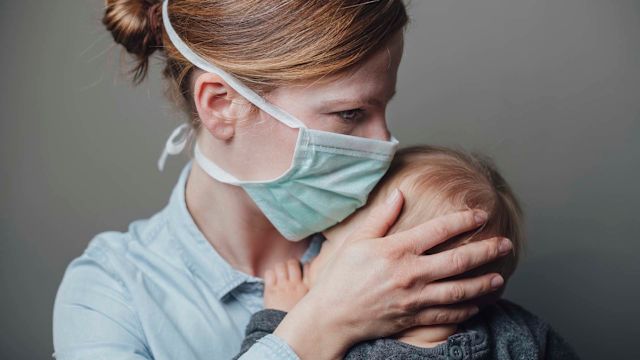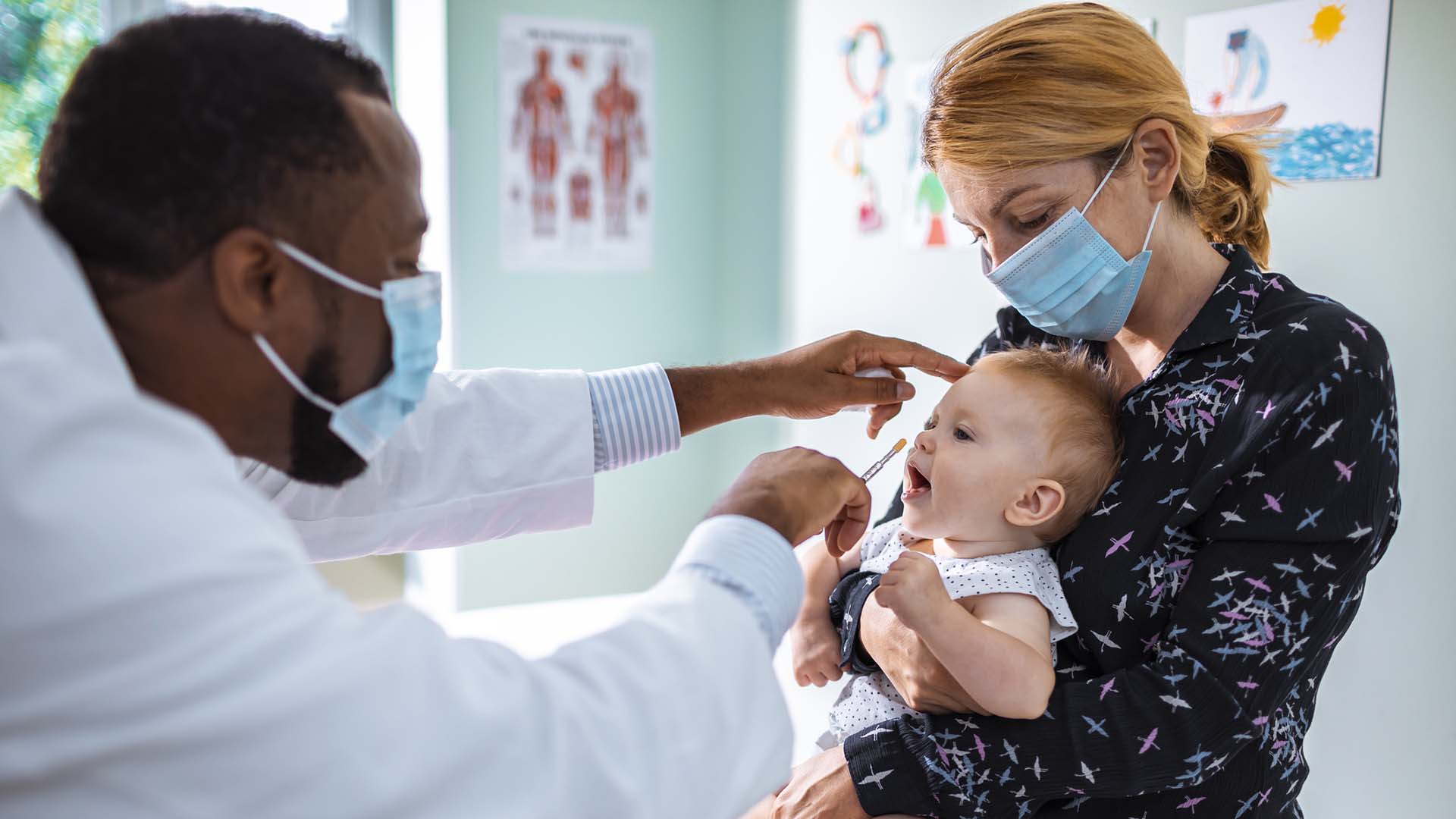Updated on April 24, 2025
Respiratory syncytial virus (RSV) is a common virus that infects the airways. In most cases, RSV infections are mild, with symptoms similar to those of a common cold—runny nose, sore throat, cough, congestion, sneezing, and fever.
However, RSV can spread to the lower respiratory tract, affecting the bronchial tubes and lungs, and leading to conditions like bronchiolitis or pneumonia. These infections can cause significant difficulty with breathing and may become life-threatening, particularly in very young or medically vulnerable children. Older adults are also at greater risk for severe RSV infections.
Each year, RSV causes millions of healthcare visits and tens of thousands of hospitalizations among children under the age of 5. Infants under six months are especially vulnerable—roughly 2 to 3 out of every 100 infants in this age group who contract RSV may require hospitalization.
Knowing your child’s risk
While any viral infection has the potential to become serious, certain people are more at risk for a severe RSV infection. Risk factors for severe RSV in infants include:
- Being younger than 6 months
- Being born pre-term
- Being Native American or Alaska Native
- Having an existing medical condition, including chronic lung disease, congenital heart disease, cystic fibrosis, a neuromuscular disorder, or a weakened immune system
- Having difficulty swallowing or clearing out mucus
- A history of allergies and/or eczema
- If a mother smoked during pregnancy, and/or exposure to secondhand tobacco smoke
- Having siblings or being around other children in childcare or being in other crowded conditions
It’s also important to understand that severe RSV infections are not strictly limited to children with these risk factors—and that any respiratory infection, whether it’s RSV or something else, can become severe given the right circumstances.
Preventing RSV infections
The CDC currently recommends two primary strategies to help prevent severe RSV illness in newborns and infants.
Maternal RSV vaccination
Pregnant individuals are now encouraged to receive a one-time RSV vaccine between 32 and 36 weeks of pregnancy during RSV season (usually fall through spring in the United States). The immunity created in response to this vaccine will be passed to the baby and will help protect a child from RSV during the first months of life, at the time when they are at the greatest risk for a severe RSV infection.
Monoclonal antibody therapy
Infants who did not receive RSV protection through a maternal vaccination can receive a monoclonal antibody therapy that protects against RSV. Monoclonal antibodies are versions of proteins that are produced in a lab that fight specific infections (in this case RSV). A single dose of anti-RSV monoclonal antibody is recommended for:
- All infants younger than 8 months who are entering their first RSV season and did not receive adequate maternal immunization.
- Some children ages 8 to 19 months who are at high risk for severe RSV (for example, those with chronic lung disease or congenital heart disease) and are entering their second RSV season.
Monoclonal antibody treatment should be given at the start of RSV season (or just before). An older monoclonal antibody therapy requires doses throughout RSV season and may be used in some cases.
Everyday prevention also matters
RSV spreads easily through droplets from coughing or sneezing and through contact with contaminated surfaces. To reduce the spread of RSV and other respiratory infections:
- Wash hands frequently with soap and warm water for at least 20 seconds
- Clean and disinfect high-touch surfaces and toys
- Avoid close contact with people who are sick
- Avoid sharing cups, utensils, or pacifiers
- Limit exposure to crowded places during RSV season, especially for young infants
Your best source of information about your child’s risk of severe respiratory illness will be a healthcare provider. Talk to your family’s pediatrician about your child’s risk, your concerns, and what preventive treatments are right for your child.






